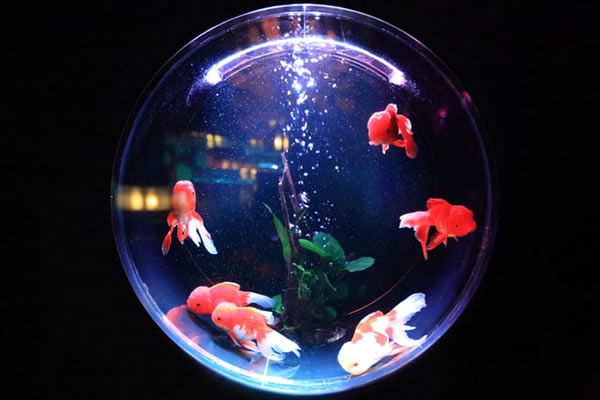
This article will discuss how to properly aerate your aquarium in order to oxygenate your tank water. This is a particularly important topic if you have an aquarium with fish that need oxygenated water. For example, discus fish are native to at least partially oxygen-poor waters and cannot survive in oxygen-rich conditions for extended periods of time. On the contrary, other species of fish like livebearers (Poeciliidae) grow very well in hydrogen peroxide-containing water. If done improperly, both systems can lead to a dead or dying fish tank.
Use A Stainless Steel Mesh Filter
This is one of the most important steps when setting up an aquarium that will be receiving a small- or medium-grade air pump. In tanks with no filter, the fish tank water can become cloudy from organic waste material and other contaminants in your tap water.
This cloudiness will cause less light to pass through to your plants and algae (in planted aquariums) which make oxygen for your fish. If there are more bacteria present, then this may lead to higher amounts of ammonia and nitrite accumulating in the tank, causing stress on the fish as well as low dissolved oxygen levels due to anaerobic conditions.
You should also replace the sponge/ceramic rings (that some filters come with) with a larger capacity biomedia. This will help slow nitrate accumulation and allow the bacteria necessary to process organics at a slower rate.
Use An Air Pump Properly
Use an air pump rated for twice the amount of aquarium water that you have (in gallons).
This is generally how much oxygen your fish need. You should know the right equipment needed for the right measurements. For the measurements, the rule of thumb with small tanks is to keep them between 3-15 gallons, medium tanks 16-30 gallons, and large tanks 31-55 or more gallons in size.
There are also a few other important things to consider: depth, surface area, and what type of fish inhabit it (for example some discus species prefer only around 1/3rd the normal levels of dissolved oxygen others will do fine at almost double). If you have questions about this, please ask a local fish store manager or trust the advice of your book, magazine, or website.
Do not use more than 1-2 air pumps per aquarium. If you have more than 2 filters (such as sponge/ceramic rings and bio-media), then use an air pump rated for twice the amount of water that each filter is responsible for.
For example, if there are 3 biofilters in your tank, each rated at 10 gallons per hour and one sponge/ceramic ring sized for 15 gallons per hour (which is recommended by most manufacturers) then you would need to invest in two 20 gallons per hour pumps - not one 30+ gallon pump. If all 3 bio-filters are rated for 30 gallons per hour, then you would need a pump that can deliver 60+ gallons per hour of oxygenated water.
Use only one air pump at a time when using bio-film and/or sponge/ceramic rings; even in larger tanks, there is very little benefit to having two workings simultaneously as it will cause the flow of the tank to be non-uniform (and therefore reduce gas exchange efficiency) because every second pump will either stop or start at an opposing rate. It also wastes energy by causing more power usage on your air pump. It is best to have just one air pump for no more than 10 gallons of capacity.
Use An Airstone
Always use an air stone (or another diffuser) when using an airstone or a commercial-grade air pump rated at 5x the amount of water your tank holds in gallons. This will help spread the oxygen out through both layers and greatly improve the efficiency and speed of gas exchange. For tanks that are larger than 55 gallons, it’s best to use two GP1300s (a double version of this model), since only one GP1700 would not be strong enough to properly oxygenate these types of fish tanks with good aeration coverage across all levels.
Take Steps To Prevent An Airtight Tank
If your power supply is shut off or goes out for longer than 12 hours, the water becomes stagnant since there is no way to circulate it using items 2-4 above. Without a constant flow of oxygen throughout the aquarium, high levels of potentially lethal anaerobic bacteria can grow at prolific rates – potentially killing fish within hours if they are not noticed in time. The most common way that this occurs is when people use timers to turn their pumps on/off automatically every day - many of these timers have a 15-30 minute (or longer) delay time when the power is turned back on, so check to see if your timer has this unreasonable amount of time.

Proper aeration of your aquarium is essential to keep your fish healthy and happy. Make sure you always use a stainless steel mesh filter, use an air pump properly, and use an airstone. Prevent your tank from becoming "airtight" by taking care in how you place the rocks or other decorations on the bottom of the tank.
